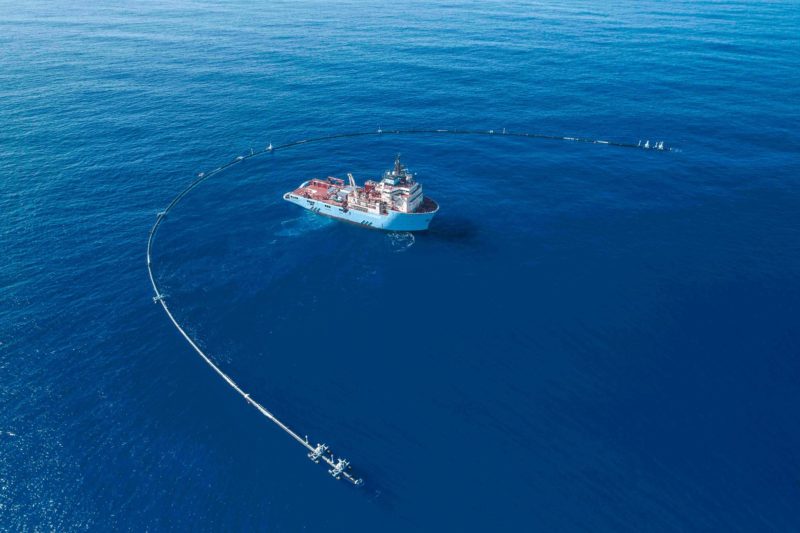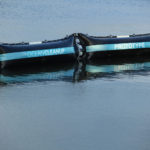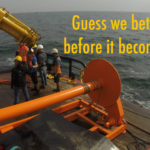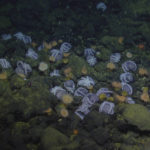boon·dog·gle
/ˈbo͞onˌdäɡəl/noun: work or activity that is wasteful or pointless but gives the appearance of having value.
verb: waste money or time on unnecessary or questionable projects.
The end of 2018 was tough for the Ocean Cleanup and its founder, inventor, and CEO Boyan Slat. In September, the 2000 foot-boom and supposed plastic collection device, was first deployed about 240 nautical miles offshore of San Francisco where it was tested for two weeks. The boom was then towed an additional 1,400 miles off the West Coast, about halfway between California and Hawaii, to begin collecting plastic in the Great Pacific Garbage Patch. This was supposed to be the first real-world proof of concept and trials of the device in the Pacific Garbage Patch.
Note that the previous prototype in the North Sea also failed at a shallower depth in calm seas. Of course, the next step is to build a bigger one and place it in rougher and deeper seas.
But in November, Ocean Cleanup stated the system was not holding plastic it collected. This lack of plastic collection arose from the system moving too slowly at times to hold plastic within the U-shaped collection area. The system is supposed to work by currents pushing plastics into the booms and nets. Yet slow and complex currents in this region of the Pacific allowed plastics to float out of the device again.
In late December, 60-feet of boom had detached due to material fatigue. Slat then indicated that this likely occurred due to wave action placing stress on the boom. The fracture was caused by material fatigue, he wrote. That’s likely because of the intense action of the waves that puts tremendous stress on objects in the water.
So to recap, the Ocean Cleanup system cannot either collect plastic or withstand the Pacific Ocean.
In a September interview with NPR, he said the device averages about four inches per second, which his team has now concluded is too slow. The break in the barrier was due to an issue with the material used to build it.
However, both of these issues could have easily been avoided by more appropriate simulations, analyses, and information prior to construction and deployment.
When the material failure occurred, it wasn’t due to the result of a major Pacific storm. It was just normal wear and tear, Slat said
Understanding material stresses is a key component of an engineering project and one that is well understood before construction. Note as well that the system is not something actually new, but is a modification of RO-BOOMS used in oil spill clean up since 1988. I am confident the specifications for use and the ocean states the booms can operate in are well known by the manufacturer and previous users alike. [UPDATE: The booms used ar eno longer the RO-BOOMS. It is a completely different design, a recent internal iteration which may explain the failure.]
And while currents are complex, a whole field of physical oceanography exists and provides readily the information to know the current regime in the area. If more detailed temporal or spatial resolution is needed, the Ocean Cleanup team should have conducted more field studies to gain the data on the currents beforehand. The Ocean Cleanup has always seemed poorly developed and executed, ignorant of the best science and data available, blatantly dismissive of critique, and far too hurried.
This rush to place the device in the ocean for both good publicity and for the feeling of accomplishing something is unproductive at best and dangerous at the worst. And it clear that Slat is committed to an overly ambitious timeline no matter the consequences.
Founder & CEO Boyan Slat announced the news in a December 31 blog post, saying “setbacks like this are inevitable when pioneering new technology at a rapid pace”, and maintaining that ” these teething troubles are solvable, and the cleanup of the Great Pacific Garbage Patch will be operational in 2019″.
Read more at http://www.mysailing.com.au/latest/ocean-cleanup-s-20-million-plastic-catcher-breaks#1R7mecWOPU9tLbJl.99
I get no pleasure in saying I told you so but…
As noted in a recent article featuring Dr. Goldstein,
But a critic who has followed Slat’s project since he unveiled it more than five years ago said the failure was predictable and that systems deployed closer to shore stand a greater chance of slowing the deluge of plastics spilling into the world’s oceans.
“I certainly hope they will be able to get it to work, but this is a very difficult environment where equipment breaks, which is why you normally do things closer to shore, where things are easier to repair,” said [Dr.] Miriam Goldstein, director of ocean policy at the Center for American Progress
In 2014, Drs. Kim Martini and Drs. Miriam Goldstein, a physical and biological oceanographer, provided a detailed technical review of the feasibility study here at DSN. Note the two of them pointed nearly 4 years ago about these issues.
….The modeling studies severely underestimate potential loads and tensions on the moored array and boom. Therefore, they are insufficient to properly design a mooring concept and estimate potential costs…
Since the authors had access to ORCAFLEX, a professional software package to design offshore marine structures, a full-scale mooring array could have been modeled to estimate loads and tensions on the moored array, but was not.
Structural deformation of the array and loss of functionality by ocean currents are not addressed…
Yeah. So these exact failures were predicted four years ago.







The following is in response to a recent article in USA Today and a similar one on NPR, which, disappointingly is neither researched nor does it present an opposing view. It applies equally her.
“I hate to say I told you so, but I attended the final arbiteur examination of the then student (now dropout, [Boylan Slat]), whose concept this project developed from, at the Technical University of Delft, TUD, in the Netherlands when I lived and worked next door at an international water research institute there., about 2012. I asked him several questions which he chose to blow off. [removed for violating commenting policy] His examining professors took notice of my questions and said to him you will answer the gentleman’s questions (I looked around wondering which gentleman they were referring to). I laid out several problems, not the least of which included the excessive weight that would be quickly added by the invertebrate fouling community, and that the project design lacked the scale to deal with the quantity of plastic present, that it would essentially choke, if it didn’t sink first. Of course as a Ph.D. in marine science with 3+ decades of experience I could be wrong. As I predicted several times in writing since 2012,, this project would not work. Unfortunately Dutch stubbornness in this instance is not a good thing. I wish the outcome at this point in time was more positive.”
In response to a friend’s comment that at least the guy is trying, I said: “ trying with poor ideas distracts from useful attempts, takes and wastes limited money from other, better prospects and causes more people to be discouraged and action-less thinking the problem is unsolvable. There are other, smart, people trying with well thought out, feasibly engineered, well tested [and modeled] options and good, egoless intentions who can’t get funding because of [removed for violating commenting policy].
In response a highlyrespected Dutch colleague wrote: “I’m still working at the institute where we were colleagues. And we’re still here trying to combat the ever increasing environmental damage being done. Not by spending time (and money) on ill-fated, albeit attention-seeking, prototype contraptions, but on science-based evidence on what will work. Hard work and research is the only way forward. Unfortunately the dutch government has also been fooled by our friend Slat, and spent precious research funds on his “research.”
[removed for violating commenting policy]
[comment deleted for violating commenting policy rule 4 https://www.deepseanews.com/about-2/commenting-policy/%5D
Ok, Mr McClain. As you suggest that „we should focus our funding and time, on more promising solutions to the ocean trash problem.“ I would be very interrested in those solutions. Could you please name a few of these solutions and describe why exactly they are more promising?
Hire the fishing trawlers of a small nation for two weeks and several empty freighters. Fish up the plastic with small-gauge nets, unload into freighters. See how effective it is. If it works, repeat until plastic is gone.
“As this article clearly lays out, we should focus our funding and time, on more promising solutions to the ocean trash problem.”
I can agree with you (provisionally) on this statement, but I have to wonder what those other “more promising” solutions are. Please name a few and point me toward a discussion of each. Thank you.
How about any of these four I clearly linked to in the article? https://www.sciencenews.org/article/ocean-cleanup-broken-system-other-trash-strategies
The problem is anything designed to remove plastic, like fine mesh nets, will also remove substantial life from the oceans as well.
How about any of these four I clearly linked to in the article? https://www.sciencenews.org/article/ocean-cleanup-broken-system-other-trash-strategies. And it is Dr. McClain